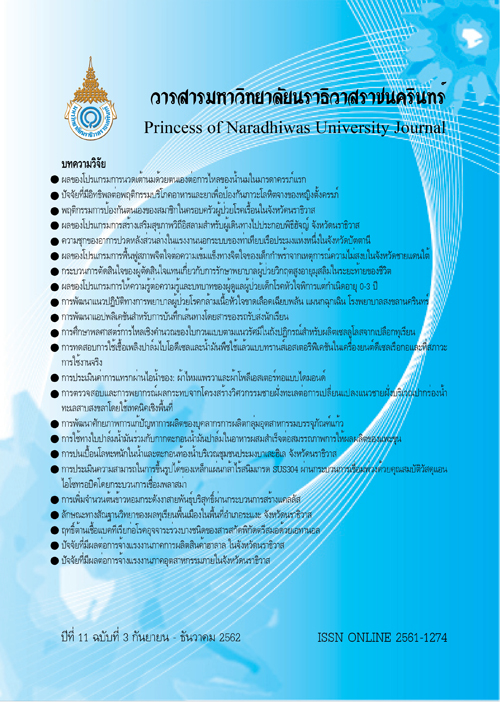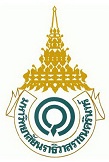[RETRACTED ARTICLE] Surrogates’ Decision Making Process Regarding Treatments for Critically IllElderly Muslim Patients at the End Stage of Life
Keywords:
Critical life, Decision making process, End of life, Muslim, SurrogatesAbstract
This article has been Retracted at the request of the Editor-in-Chief.
This descriptive research aimed to study the steps in thedecision-making processfrom surrogates
regarding treatment for critically ill patients at the ending stage of life, in a Muslim cultural context. Conveniencesampling was used to select 120 surrogates of patients from Muslim cultural background who have been treated in the internal medicine intensive care unit and medical ward in 5 southern province hospitals. Information collected consisted inquestionnaires on demographic data, as well as on 3 different decision-making processes. Alpha’s Cronbach coefficient for instrument was 0.87. Descriptive statistics was used for data analysis.
Results revealedthatstep of the decision-making process regarding information acknowledgement; asking about symptom information, was rated the most (M = 3.28, S.D. = 1.06), followed by disease prognosis (M = 3.14, S.D. = 1.05). In the step of data analysis, religious belief was rated the most (M = 3.98, S.D. = 0.03), followed by patients’ needs (M = 3.94, S.D. = 0.06), identify the criteria in decision and alternatives in treatment (M = 3.75, S.D. = 0.48), as well as analysis of family relationship after the decision making(M = 3.46, S.D. = 0.71). Surrogate decision-makers did all steps of the decision-making process. Findings from this study might be useful to develop guidelines to provide health information to support decision making and to develop care plan that is consistent with cultural context and background of patients and family.
References
Anuruang, S. (2017). Multimorbidity in older persons: situation, challenge issues, and care management. Journal of Nursing Science Chulalongkorn University, 29(2), 1-14.
Attum, B., & Shamoon, Z. (2019). Cultural Competence in the Care of Muslim Patients and Their Families. In StatPearls. Treasure Island (FL): StatPearls Publishing-. Available from https://www.ncbi.nlm. nih.gov/books/NBK499933/
Dhami, S., & Sheikh, A. (2000). The Muslim family predicament and promise. Western Journal of Medicine,173(5), 352-356.
Docherty, A., Owens, A., Asadi-Lari, M., Petchey, R., Williams, J., & Carter, Y. (2008). Knowledge and information needs of informal caregivers in palliative care: a qualitative systematic review. Palliative Medicines, 22(2), 153-171. doi: 10.1177/0269216307085343.
Elshamy, K. (2017). Cultural and ethical challenges in providing palliative care for cancer patients at the end-of-life. Palliative Medicine and Hospice Care, 1, 75-84. doi: 10.17140/PMHCOJ-SE-1-116.
Kanchanachari, O., Sirapo-ngam, Y., & Monkong, S. (2017). Roles and needs of caregivers for patients with end of life in a specifc setting for palliative care. Ramathibodi Nursing Journal, 23(3), 328-343
Kaspers, P.J., Onwuteaka-Philipsen,B. D., Deeg, D.J.H., & Pasman , H. R.W. (2013). Decision-making capacity and communication about care of older people during their last three months of life. BMC Palliative Care, 12(1). DOI: 10.1186/1472-684X-12-1.
Klinmalee, P. (2015). Surrogates’ Decision Making and Its’ Outcomes Regarding Treatments for Buddhist Critically Ill Patients at the End Stage of Life. Prince of Songkla University, Songkhla. (in Thai)
Klinmalee, P., Kongsuwan, W., & Manasurakarn, J. (2015). Surrogates’ Decision Making and Its’ Outcomes Regarding Treatments for Buddhist Critically Ill Patients at the End Stage of Life. The 8th Walailak Reasearch National Conference. Nakhonsithammarat. (in Thai)
Leclaire, M.M., Oakes, J.M., & Weinert, C.R. (2005). Communication of prognostic information for critically ill patients. Chest Journal, 128(3), 1728-1735.
Manasurakarn, J., Chaowalit, A., Suttharangsee, W., Isaramalai, S., & Geden, E. (2008). Values underlying end-of-life decisions of Thai Buddhist patients and their families. Songklanagarind Medical Journal, 26(6), 549-559.
Mobasher, M., Aramesh, K., Zahedi, F., Nakhaee, N., Tahmasebi, M., & Larijani, B. (2014). End-of-life care ethical decision-making: Shiite scholars’ views. The Journal of Medical Ethics and History of Medicine, 7(2).
Nijinikaree, N., Chaowalit, A., & Hatthakit, U. (2008). The perspectives of end-of-life decisions in chronically ill Thai Muslim patients in the five border provinces of southern Thailand. Songklanagarind Medical Journal, 26(5), 431-439.
Polit, D.F., & Beck, C. T. (2012). Nursing research: Generating and assessing evidence for nursing practice (9th ed.). Wolters Kluwer Health/ Lippincott Williams & Wilkins.
Raetong, P. (2016). Experience of Surrogate Decision Makers in Withdrawing Life-Sustaining Treatment: Types of Help Needed from Physicians and Nurses. Thai Journal of Nursing Council, 31(4), 122-133.
Rodrigues, R., Huber, M.,& Lamura, G. (2012). Fact and Figures on Healthy Ageing and Long-Term Care. Vienna: European Centre for Social Welfare Policy and Research.
Schultz, M., Baddarni, K., & Bar-Sela, G. (2012). Refections on palliative care from the Jewish and Islamic tradition. Evidence-Based Complementary and Alternative Medicine, 2012. doi:10.1155/2012/693092
Srisatidnarakul,B.(2007).ThemeyhodologyinNursingResearch(4thed).Bangkok:You&IIntermediaPrinting. (in Thai)
Thelen, M. (2005). End-of life decision making in intensive care. Critical Care Nurse, 25(6), 28-37.
Wallace, C. L. (2015). Family communication and decision making at the end of life: A literature review.Palliative and Supportive Care, 13, 815–825.
Varisco, D. M. (2011). The end of life, the ends of life. The Journal of the Islamic Medical Association, 43, 203–207.
Downloads
Published
How to Cite
Issue
Section
License
Copyright (c) 2019 Princess of Naradhiwas University Journal

This work is licensed under a Creative Commons Attribution-NonCommercial-NoDerivatives 4.0 International License.




